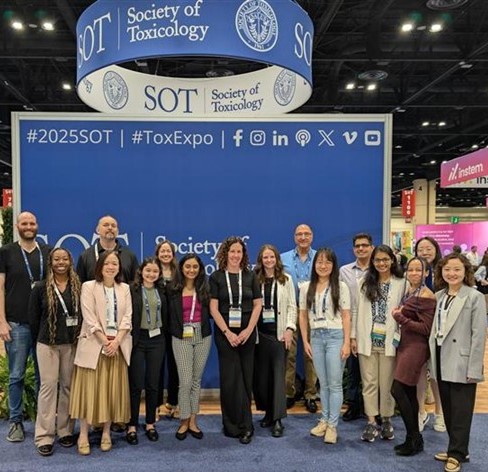
Baoli Qian, Natalie Price, Alexis Kiyanda, Zach Zimmerman, Jiaqi Vivien Lyu, Juliane I. Beier, Pooja Muddasani, Charis-Marie Vanderpuye, Shannon Heinig, and Yuexin Cao presented at the 64th Annual Meeting of the Society of Toxicology March 16-20 in Orlando, Florida. Lyu, a PhD student, received a travel award and Secondary Faculty Member Beier was invited to give a 'Tiny Tox Talk'.
Baoli Qian
"The Impact of in utero and Early Life Arsenic Exposure on Skeletal Muscle Metabolic Health: Evidence of Glycogen Depletion and Metabolic Shift"
Fourth-year PhD student; Mentor: Aaron Barchowsky
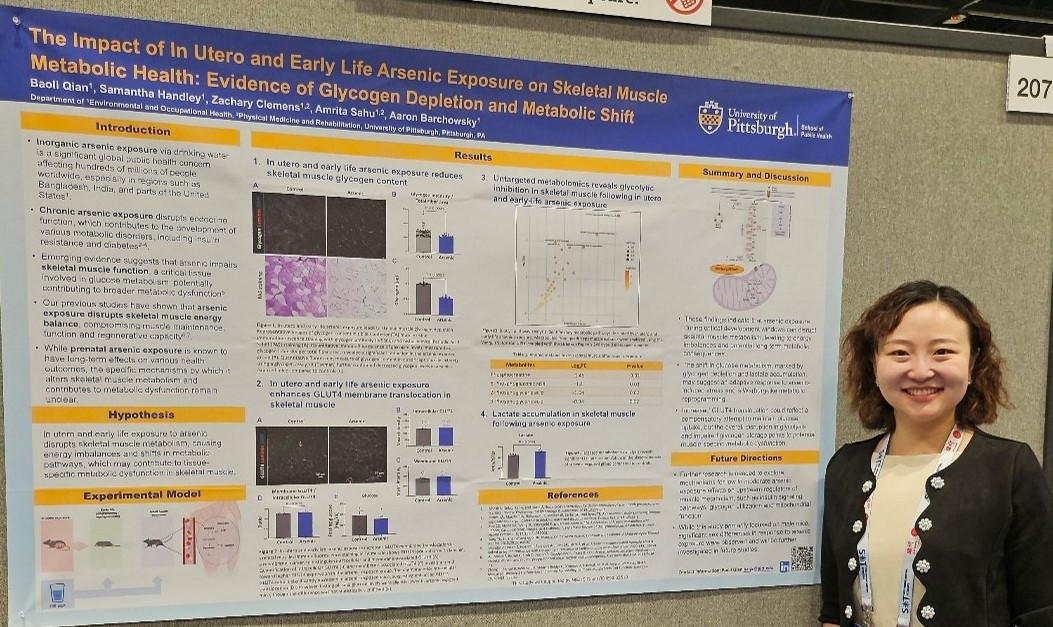
Arsenic-related complex diseases impact the health of hundreds of millions of people worldwide. Qian's research explores how arsenic adversely affects skeletal muscle metabolism—an area increasingly linked to elevated risks of cardiovascular and metabolic diseases. Using an in vivo model and metabolic profiling, she identified disruptions in carbohydrate metabolism that may contribute to systemic metabolic dysfunction.
Natalie Price
"The effects of urinary metal mixtures on insulin resistance in Afro-Caribbean men and women"
Fourth-year PhD student, Department of Epidemiology; Mentor: Alison P. Sanders
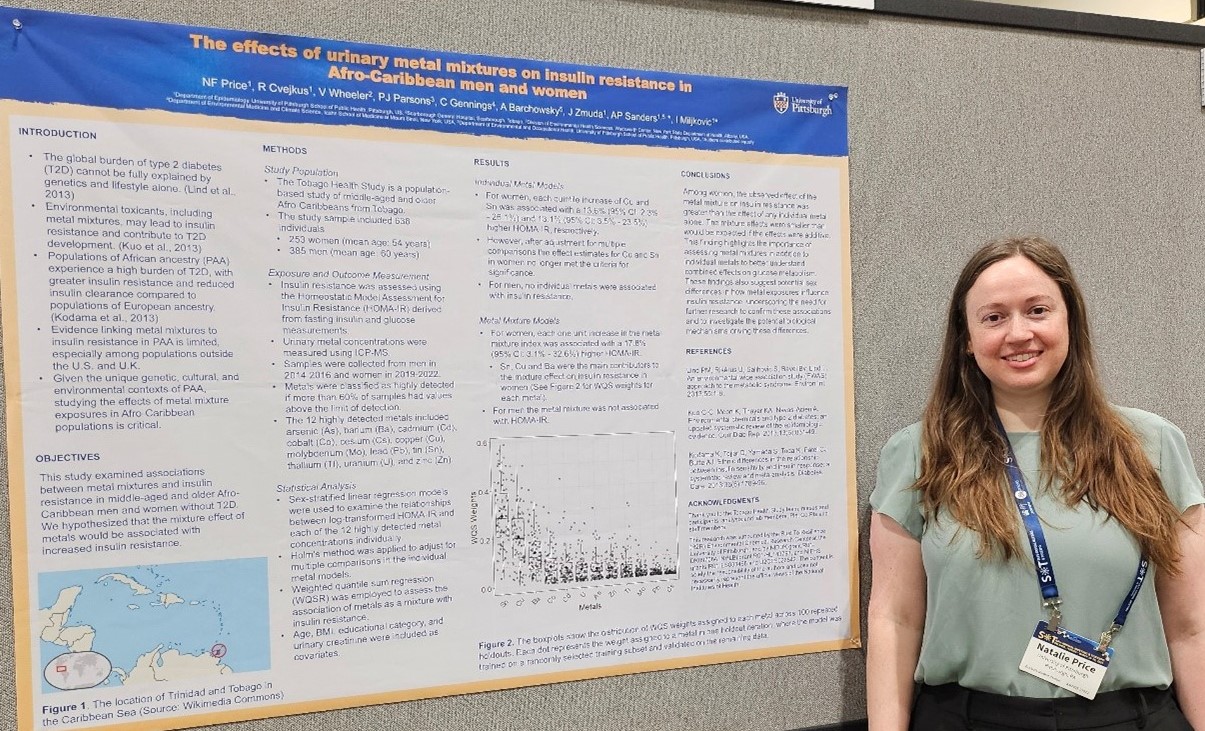
Utilizing the Tobago Health Study—a population-based study of middle-aged and older Afro-Caribbeans from Tobago—Price examined associations between metal mixtures and insulin resistance among individuals without type 2 diabetes. This work aims to inform future risk assessment strategies and public health guidelines that account for population - and region-specific exposures.
Alexis Kiyanda
"Associations Between Urinary Trace Element Concentrations and the Odds of Uterine Fibroid Prevalence in African-Caribbean Women"
Second-year MS student; Mentor: Alison P. Sanders

Utilizing the Tobago Women's Study—a population-based study that measured urinary trace elements and collected health histories between 2019 and 2023—Kiyanda reported an association between urinary concentrations of the non-essential element cadmium (but not other selected trace elements) and higher odds of uterine fibroids in this population. Her work highlights the relationship between both essential and non-essential trace elements and women's health in a cohort of African-Caribbean women.
Zach Zimmerman
"Investigating the Effects of Heat Stress and PFAS Exposure on Transcriptomics of Developing Danio rerio"
Research scientist in Alison P. Sanders' laboratory
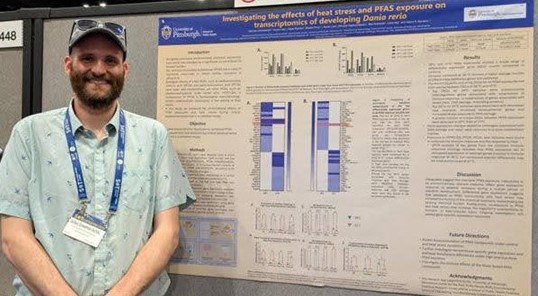
Zimmerman demonstrated the combined effects of PFAS exposure and heat stress on the transcriptome during critical developmental periods using a zebrafish model. The findings suggest that co-exposure may heighten chemical toxicity and increase vulnerability to related injuries through transcriptional changes. This work offers new insights into how environmental stressors, such as heat, can amplify the harmful effects of chemical exposures like PFAS.
Travel Award Winner - Jiaqi Vivien Lyu
"Effects of Maternal Inorganic Arsenic Exposure on Maternal and Fetal Health: Insights from Placental Transcriptomic Analysis"
Second-year PhD student; Mentor: Winnie Wan-yee Tang
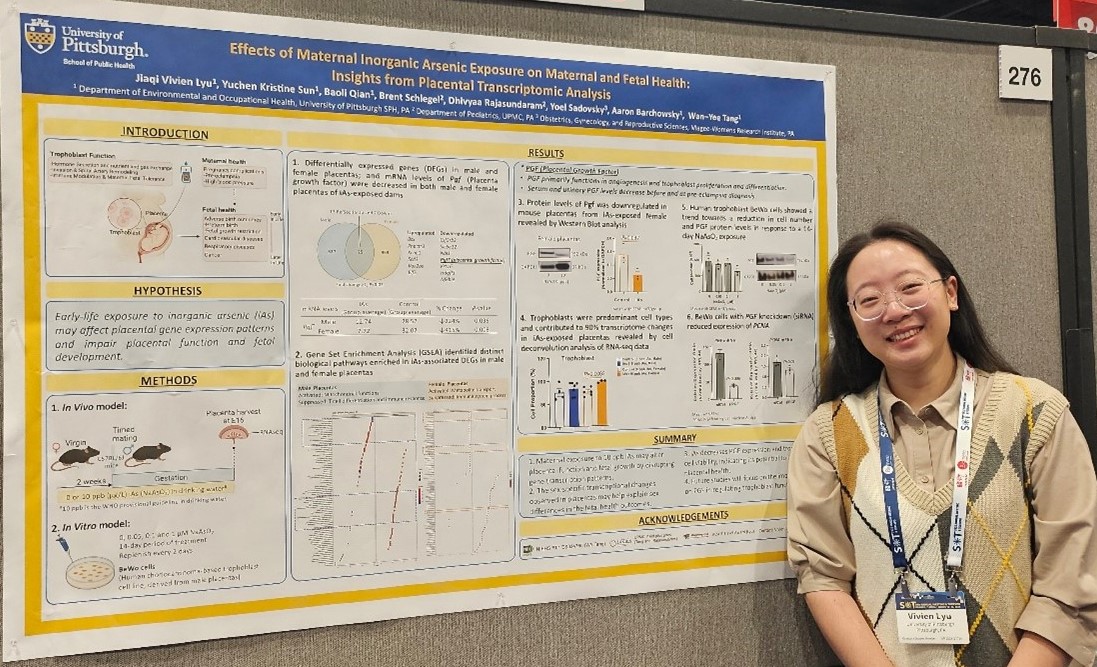
Lyu's research suggests that maternal iAs exposure alters gene expression patterns associated with placental dysfunction, potentially disrupting the intrauterine environment and fetal development. Additionally, the sex-specific transcriptional changes observed in the placenta may help explain sex differences in the fetal origins of adult diseases. Assessing placental transcriptomic changes may enhance our understanding of arsenic-induced pathophysiologic effects on both mother and infant.
Tiny Tox Talk Presenter - Juliane I. Beier
"Toxic Relationships: When Liver Meets Industrial Chemicals"
Assistant professor of medicine with secondary appointment in EOH
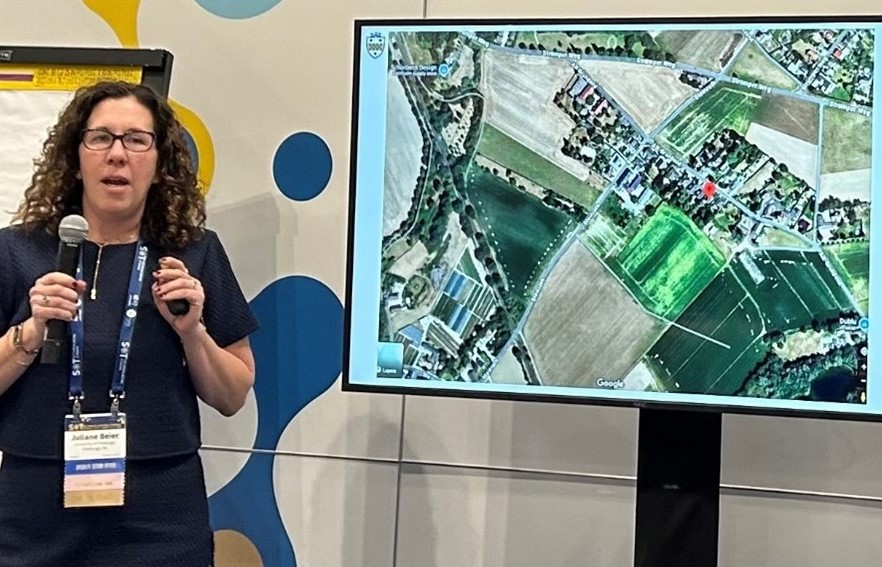
Environmental chemicals act as both direct risk factors and modifiers for liver disease, yet significant barriers exist in implementing environmental health science in clinical hepatology. There's an urgent need to incorporate the exposome into precision medicine approaches, gather longitudinal data on pollution's effects on disease progression and treatment outcomes, and develop better awareness, resources, and guidelines that recognize environmental toxicants as important mediators of metabolic risk. This talk emphasized the importance of inter-society communication, such as SOT and the American Association for the Study of Liver Diseases to address these needs.
Pooja Muddasani
"Hepatic BiP (GRP78) Overexpression Mitigates Vinyl Chloride-Enhanced MASLD Development"
Biomedical master's program graduate; Mentor: Juliane I. Beier

Muddasani's work examines how BiP (GRP78), and ER chaperone protein, affects vinyl chloride-enhanced liver disease development in mice.
Liver-specific BiP overexpression attenuated both micro- and macrovesicular hepatic steatosis, reduced hepatic inflammation, and normalized liver injury markers despite continued vinyl chloride exposure and Western diet feeding, indicating that the endoplasmic reticulum is a critical target in vinyl chloride-induced injury.
Charis-Marie Vanderpuye
"Mitochondrial-Targeted Peptide SS-31 Mitigates Hepatic Injury Induced by Combined Vinyl Chloride Exposure and Western Diet"
Biomedical master's program graduate; Mentor: Juliane I. Beier
Vanderpuye's research investigated how SS-31, a mitochondrial-targeted peptide, affects liver injury caused by combined vinyl chloride exposure and Western diet in mice. SS-31 treatment significantly reduced liver injury markers, improved hepatic histopathology, and protected against mitochondrial dysfunction, suggesting it has protective effects against combined metabolic and environmental insults.
Shannon Heinig
"Acute Experimental Military Burn Pit Exposure Induces Complex Liver Injury in Rats"
First-year PhD student; Mentor: Juliane I. Beier
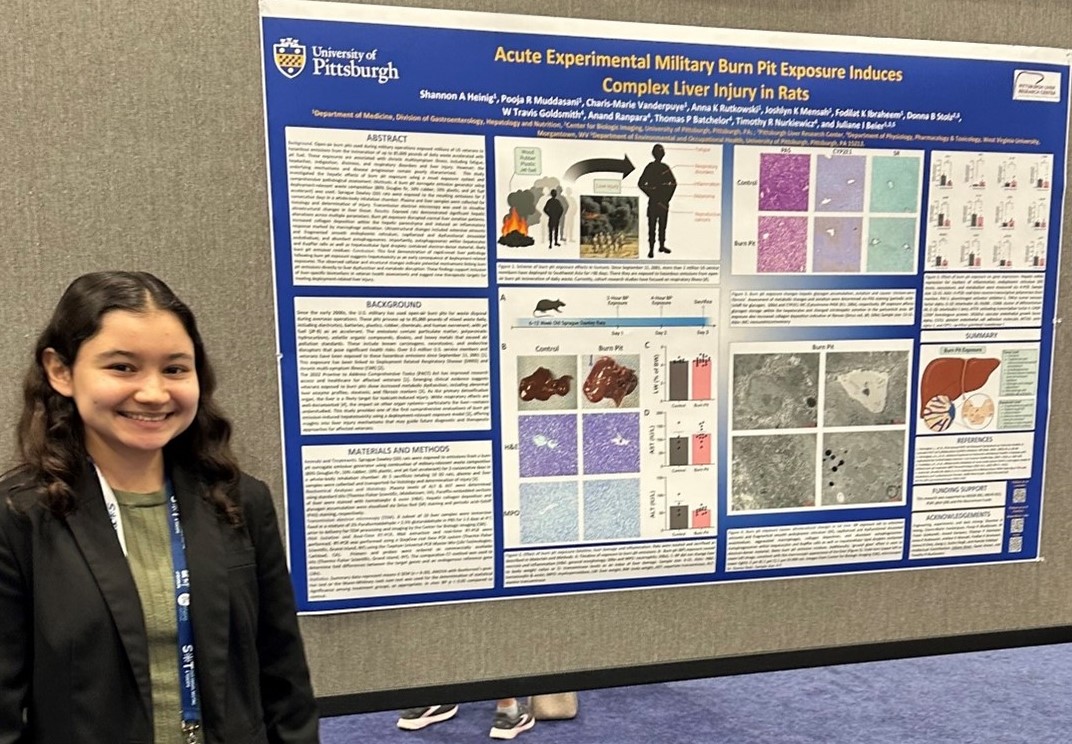
Heinig's study demonstrated that brief exposure to military burn pit emissions causes rapid-onset liver pathology in rats, including disruption of normal liver zonation, increased collagen deposition, inflammation, and ultrastructural changes. The findings suggest hepatotoxicity as an early consequence of deployment-related exposures and support the inclusion of liver-specific biomarkers in veteran health assessments.
Yuexin Cao
"Toxicity of Photolithography-relevant PFAS Reveals Concerns for Less-studied Functional Groups"
Postdoctoral researcher in Carla Ng's Lab
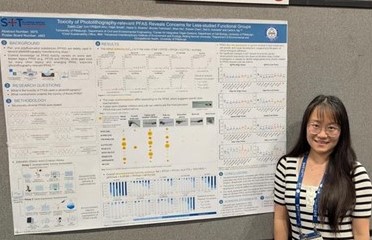
This work investigates the toxicity of nine structurally diverse PFAS used in photolithography by integrating multidimensional zebrafish data. The results show that these PFAS could induce varying degrees of lethality and malformations in zebrafish larvae and alter the expression of genes involved in lipid metabolism, cell growth and organ development. Notably, some less-studied functional groups - such as dicarboxylic acids and perfluorosulfonamides - exhibit concerning toxicity profiles. This work provides critical insight into the environmental and biological impacts of PFAS in semiconductor manufacturing, supporting more sustainable industry practices.